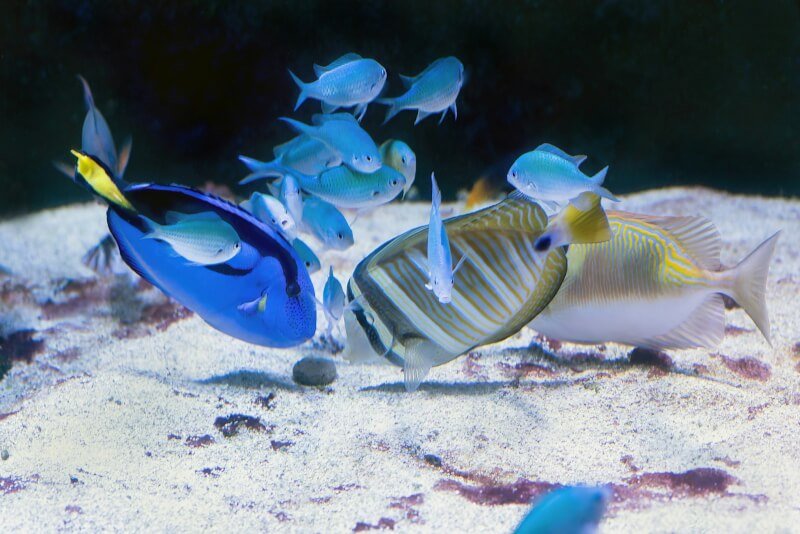Feeding your aquarium fish may seem like a straightforward task, but did you know that there is actually a proper way to do it? In this article, we will explore the dos and don’ts of feeding aquarium fish, covering everything from the right amount of food to the ideal feeding schedule. Whether you are a seasoned aquarium enthusiast or just starting out, grab your fish food and get ready to discover the key to keeping your aquatic friends happy and healthy.
Importance of Proper Feeding
Feeding aquarium fish may seem like a simple task, but it holds great importance for the overall health and well-being of your aquatic pets. Proper feeding goes beyond just providing sustenance; it also helps maintain the water quality in your aquarium. Understanding the dietary needs of your fish and implementing the right feeding techniques are crucial for their optimal growth and development.
Understanding the Dietary Needs
Different fish species have specific requirements when it comes to their diet. It’s essential to research and understand the dietary needs of the fish species you have in your aquarium. Some fish require a predominantly herbivorous diet, while others are carnivorous or omnivorous. Knowing the specific requirements will help you provide the right nutrition for your fish.
In addition to species-specific requirements, it’s important to provide a balanced diet to ensure your fish are receiving all the necessary nutrients. Just like humans, fish require a variety of vitamins, minerals, and proteins to thrive. This can be achieved by offering a combination of different types of food.
Frequency of Feeding
The frequency of feeding varies depending on the fish species you have. Some fish need to be fed multiple times a day, while others can be fed once or twice. It’s crucial to consider both the age and size of your fish when determining the feeding schedule. Younger fish may require more frequent feedings compared to adult fish. Additionally, larger fish may need larger portions to meet their nutritional needs.
Types of Aquarium Fish Food
There are several types of fish food available on the market. The most common types include flakes, pellets, and freeze-dried or frozen foods. Flake food is a popular choice and is suitable for a wide range of fish species. Pellets provide a more concentrated form of nutrition and are available in various sizes to accommodate different fish. Freeze-dried or frozen foods offer a more natural and nutrient-rich option, especially for fish that require a protein-rich diet.
Feeding Techniques
Ensuring the proper amount of food is provided is essential for the health of your fish. Overfeeding can lead to various issues such as obesity, digestive problems, and poor water quality. On the other hand, underfeeding can result in malnutrition and stunted growth. It’s important to strike a balance and feed your fish an appropriate amount.
Feeding at the right time is also crucial. Most fish are most active and ready to eat in the morning and evening hours. Observing the behavior of your fish can help you determine when they are most responsive to feeding. This will ensure that they consume the food promptly.
Avoid Overfeeding
Overfeeding can have negative impacts on both your fish and the overall tank environment. Excess food that is not consumed by the fish will sink to the bottom of the tank, leading to waste accumulation. This can deteriorate the water quality and create a breeding ground for harmful bacteria and algae. Overfeeding can also cause excessive fish waste, increasing the ammonia and nitrite levels in the water. This can be detrimental to the health of your fish and other tank inhabitants.
Observe and Adjust
Observing your fish’s feeding response can provide valuable insights into their dietary needs. Some fish may be more aggressive eaters and require larger portions, while others may be more timid and need smaller, more frequent feedings. Regularly monitoring your fish’s behavior and evaluating their response to different types of food will help you tailor your feeding routine for their specific needs.
If you notice any changes in your fish’s appetite, weight, or overall health, it may be necessary to modify their feeding routine. Fish can experience variations in their nutritional requirements over time, especially during growth or breeding periods. Adjusting the amount and frequency of feedings accordingly will help ensure their continued well-being.
Feeding Strategies for Different Fish
Different fish have different feeding strategies based on their natural habits and preferences. Surface feeders, such as guppies or hatchetfish, tend to consume food that floats on the water’s surface. Providing them with floating flakes or pellets will cater to their feeding behavior. On the other hand, bottom dwellers like catfish or loaches, prefer to scavenge for food at the bottom of the tank. Sinking pellets or wafer-type foods are ideal for these species. Mid-water swimmers, such as tetras or angelfish, can be fed with a combination of floating and sinking foods to accommodate their feeding needs.
Supplementary Feeding
In addition to commercially available fish food, supplementary feeding can provide additional nutrition and enrichment for your fish. Live foods, such as brine shrimp or bloodworms, are an excellent source of protein and can be fed occasionally to mimic their natural diet. Some fish also benefit from consuming vegetables or algae. This can be achieved by offering blanched spinach, zucchini, or specialized algae wafers. Supplementary feeding should be done sparingly and should not replace the main staple diet.
Conclusion
Proper feeding is vital for the overall health, growth, and well-being of your aquarium fish. By understanding the specific dietary needs of your fish species, implementing appropriate feeding techniques, and avoiding overfeeding, you can ensure their optimal nutrition and a thriving tank environment. Regular observation and adjustment of feeding routines, as well as the inclusion of supplementary foods when necessary, will help maintain a balanced diet for your fish. With proper feeding, you can enjoy the beauty and vibrancy of your fish as they flourish in a healthy and well-nourished environment.


